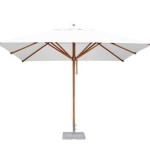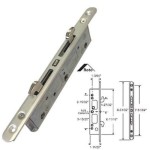Patio Door Mortise Lock Replacement: A Comprehensive Guide
Patio doors offer a seamless transition between indoor and outdoor living spaces, enhancing aesthetics and functionality. A crucial component of the patio door system is the mortise lock, responsible for security and ease of operation. Over time, these locks can malfunction due to wear and tear, damage, or security upgrades, necessitating replacement. This article provides a comprehensive guide to patio door mortise lock replacement, covering the process, key considerations, and troubleshooting.
Understanding Mortise Locks and Their Function
A mortise lock is a type of lock that is installed inside a mortise, a pocket cut into the door's edge. Unlike cylindrical locks which are installed through a hole bored through the door, mortise locks require a more complex installation process. They typically consist of a lock body, a cylinder (where the key is inserted), a strike plate (mounted on the door frame), and various levers and mechanisms that control the locking and unlocking action.
In the context of patio doors, mortise locks provide a high level of security due to their robust construction and the way they engage with the door frame. Patio door mortise locks often feature a hook-shaped latch that securely grasps the strike plate, resisting forced entry. Understanding the components of a mortise lock is essential for successful replacement.
Different types of mortise locks are used for patio doors. Some common variations include:
- Single-cylinder mortise locks: These locks can be locked and unlocked from the outside with a key, while a thumb turn or lever on the inside controls the locking mechanism.
- Double-cylinder mortise locks: These require a key to lock and unlock from both the inside and outside. These offer added security, but can be a safety hazard in emergency situations.
- Multi-point locking systems: These represent a more advanced type of mortise lock that secures the door at multiple points along the frame, enhancing resistance against forced entry.
Identifying the type of mortise lock currently installed is the first step in the replacement process, ensuring compatibility with the new lock.
Assessing the Need for Replacement
Several indicators may point to the need for a patio door mortise lock replacement. These could include difficulty in locking or unlocking the door, a loose or wobbly handle, visible damage to the lock body or cylinder, or security concerns.
Functional Issues: If the key is difficult to insert, turn, or if the latch doesn't engage properly with the strike plate, it may indicate a problem with the internal mechanisms of the lock. Similarly, a handle that feels loose or wobbly can be a sign of wear and tear on the lock's connecting components.
Physical Damage: Visual inspection of the lock can reveal cracks, dents, or rust, which can compromise its structural integrity. Damage to the cylinder, such as a bent keyway, can also prevent proper operation.
Security Concerns: After a break-in attempt, the mortise lock may be damaged, even if it appears functional. Additionally, if the existing lock is outdated or doesn't provide the desired level of security, upgrading to a more robust model is advisable.
Before proceeding with replacement, it is worth attempting minor repairs. Lubricating the lock mechanism with a graphite-based lubricant can sometimes resolve issues related to sticking or difficulty operating the lock. Tightening loose screws on the handle or strike plate can address wobbling or misalignment problems. However, if the problem persists, or if there is significant damage, replacement is the best course of action.
Step-by-Step Mortise Lock Replacement Procedure
Replacing a patio door mortise lock requires careful execution and attention to detail. The following steps outline the process:
- Gather tools and materials: The necessary tools include a screwdriver set (including both flathead and Phillips head screwdrivers), a measuring tape, a hammer, a chisel, a safety glasses, and the replacement mortise lock.
- Remove the old mortise lock: Begin by unscrewing and removing the handle and any trim plates securing the lock to the door face. Next, locate and remove the screws holding the lock body in place within the mortise. Carefully slide the old lock body out of the mortise pocket. If the lock is stuck, gently tap it with a hammer and chisel around the edges to loosen it.
- Prepare the mortise pocket: Once the old lock is removed, inspect the mortise pocket for any debris or irregularities. Clean the pocket thoroughly to ensure the new lock fits snugly. If necessary, use a chisel to enlarge or reshape the mortise to accommodate the new lock body. Ensure the pocket is deep enough and wide enough to house the new mortise lock.
- Install the new mortise lock: Slide the new mortise lock body into the mortise pocket. Ensure it is oriented correctly, with the latch facing the door jamb. Align the screw holes on the lock body with the corresponding holes on the door face. Secure the lock body in place with screws. Do not overtighten the screws, as this can damage the lock or the door.
- Install the handle and trim plates: Attach the handle and any trim plates to the new mortise lock. Ensure the handle operates smoothly and engages the latch mechanism properly. Tighten the screws securely, but avoid overtightening.
- Adjust the strike plate: The strike plate is the metal plate mounted on the door frame that the latch engages with. With the new mortise lock installed, close the patio door and check the alignment between the latch and the strike plate. If the latch does not align properly, the strike plate may need to be adjusted. Loosen the screws holding the strike plate in place and reposition it as needed. Use shims to fill gaps if necessary. Once the latch engages smoothly, tighten the screws securely.
- Test the lock: Thoroughly test the new mortise lock to ensure it functions properly. Lock and unlock the door several times using both the key and the thumb turn. Verify that the latch engages securely with the strike plate. Check for any sticking or binding. If any issues are detected, re-examine the installation and make any necessary adjustments.
When selecting a replacement, it's important to consider compatibility with your existing door hardware and the level of security required. Measure the dimensions of the old lock to ensure the new lock fits properly. Consider upgrading to a higher security mortise lock with features such as a reinforced strike plate or anti-pick cylinder.
Troubleshooting Common Issues
Even with careful installation, some issues may arise during or after the mortise lock replacement process. Common problems and their solutions are outlined below.
Difficulty Installing the New Lock Body: If the new lock body does not fit into the mortise pocket, double-check the dimensions of the lock and the pocket. If the pocket is too small, carefully enlarge it with a chisel. Ensure the pocket is free of debris. If the lock is still difficult to install, try lubricating the exterior of the lock body with a small amount of grease.
Latch Does Not Engage Properly: If the latch does not engage with the strike plate, the strike plate may be misaligned. Adjust the strike plate as described above, ensuring it is properly aligned with the latch. If the gap between the door and the frame is too large, shims may be necessary to fill the gap.
Key is Difficult to Turn: If the key is difficult to turn, the cylinder may be misaligned. Loosen the screws holding the cylinder in place and realign it. Lubricating the keyway with a graphite-based lubricant can also improve the key's operation. If the problem persists, the cylinder may be damaged and require replacement.
Handle is Loose or Wobbly: If the handle is loose or wobbly, tighten the screws holding it in place. If the screws are stripped, replace them with longer screws. Applying thread locker to the screws can also help prevent them from loosening.
Lock Jams or Sticks: If the lock jams or sticks, lubricate the internal mechanisms with a graphite-based lubricant. Remove any debris that may be obstructing the lock's operation. If the problem persists, the lock may be damaged and require further inspection or replacement.
If troubleshooting doesn't resolve the issue, seeking professional assistance from a locksmith or door repair specialist is recommended.
Enhancing Security with Upgraded Mortise Locks
Replacing a mortise lock provides an opportunity to enhance the security of the patio door. Consider upgrading to a higher-security mortise lock with advanced features such as:
- Reinforced Strike Plates: These strike plates are made of thicker steel and are designed to withstand greater force. They are typically secured with longer screws that penetrate deeper into the door frame.
- Anti-Pick Cylinders: These cylinders feature special mechanisms that make them resistant to picking. They are designed to prevent unauthorized access using tools or techniques commonly used by burglars.
- Multi-Point Locking Systems: As mentioned earlier, these systems secure the door at multiple points along the frame. They offer superior resistance to forced entry compared to single-point mortise locks.
- High-Security Keys: Some mortise locks use high-security keys that are difficult to duplicate. These keys are often protected by patents and can only be duplicated by authorized locksmiths.
When selecting a replacement, research different brands and models and read reviews to ensure you are choosing a lock that meets your security needs. Consulting with a locksmith can provide valuable insights and recommendations based on your specific circumstances.
Regular maintenance can extend the lifespan of a mortise lock and ensure it continues to function properly. Lubricating the lock mechanism periodically with a graphite-based lubricant can prevent sticking and binding. Inspecting the lock regularly for signs of damage or wear and tear is also important. Addressing minor issues promptly can prevent them from escalating into more serious problems.
Properly functioning and secure patio door mortise locks are essential for the safety and security of a home. Understanding the replacement process, troubleshooting common issues, and considering security upgrades can help homeowners maintain the integrity of their patio door systems.

Mortise Lock Mortice Replacements For Patio Doors Sliding Inswing Outswing Marvin Pella Andersen Peachtree Biltbest Pgt Alenco Window Parts

82 244 Patio Door Mortise Lock And Keeper Swisco Com

Dl 701 Peachtree Patio Door Mortise Lock With Spacing Replacement Latch Fruugo No

How To Replace The Single Mortise Lock On A Builders Vinyl Patio Door Youtube

82 211 Mortise Latch Keeper 3 4 Wide Swisco Com

Common Mortise Lock Vertical Slot Metal Sliding Patio Doors W F St

Prime Line Mortise Lock 4 5 8 In Steel 45 Degree Keyway Round Faceplate Spring Loaded E 2164 The Home

White Patio Door Handle Set With Mortise Lock Suitable For Replacement Sliding Doors 3 15 16 Screw Hole Spacing Choices That Add A Unique To Your Glass Walmart Com

Replacement Sliding Glass Patio Door Mortise Lock And Keeper Kit Ebay

Peachtree Prado Crestline Sliding Patio Door Replacement Lock Mortise Pwdservice
See Also








